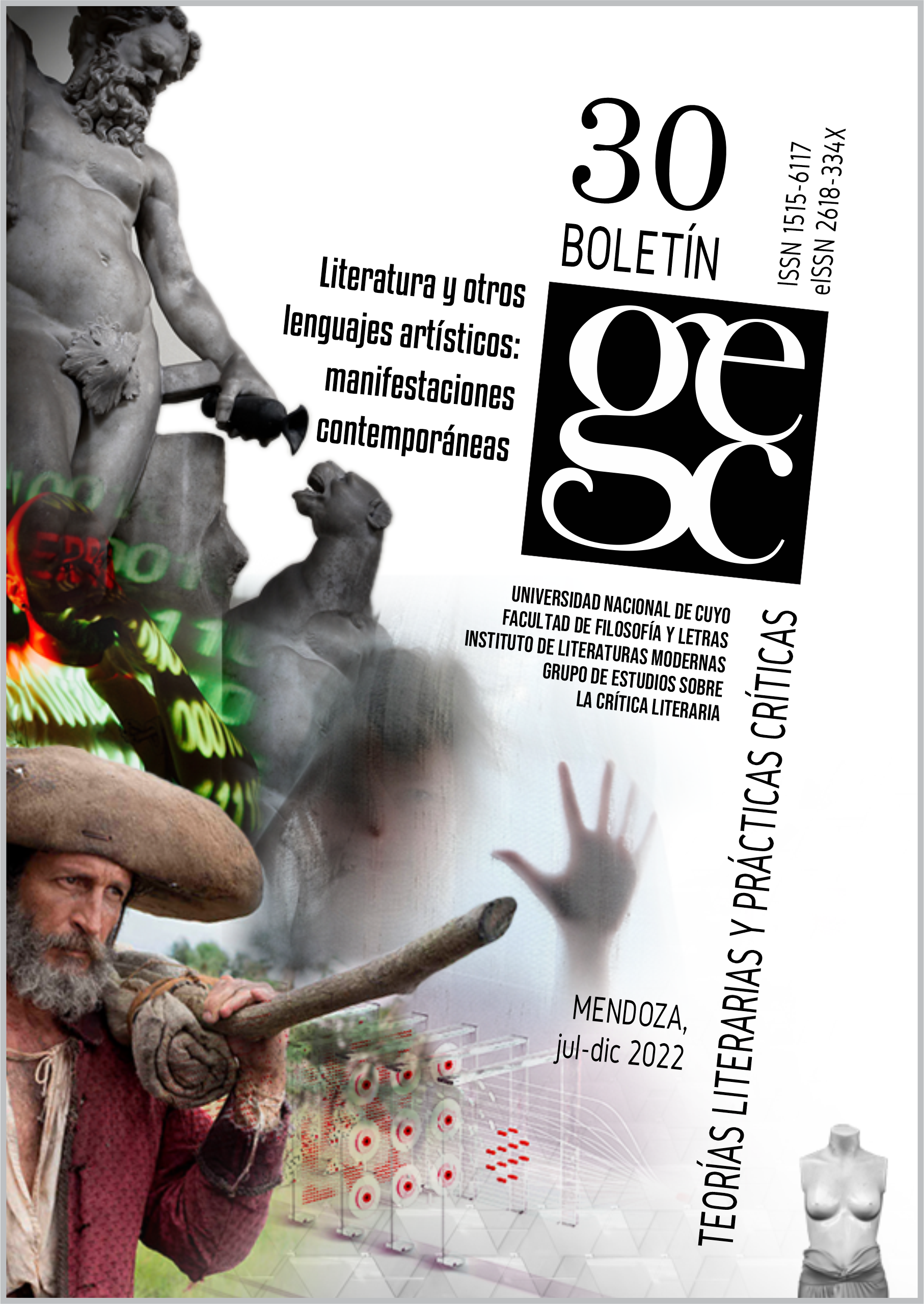Literature and photography: To remind, to observe, to preserve
DOI:
https://doi.org/10.48162/rev.43.025Keywords:
literature, photography, W.G. Sebald, memory, inner gazeAbstract
In this article we study the relationship between literature and photography taking into account the aspects around memory, the fact of preserving it through memory and fixing it through writing and visual image. The objective is to analyze how photography operates in the narrative process, dialoguing with the spaces and times between writing, photography and the art of memory. Taking into account this framework of debates, we study a series of texts by the German writer W.G. Sebald: Vertigo (1990), Campo Santo and On the natural history of destruction (1986). The hypothesis that we propose is that in Sebald´s narrative some in-between-places emerge from the intersection between writing and photography that allows to show an inner gaze and also selects mental images and memories to build both personal history and History. The photographs operate by evoking the past, building the reality and the intimate that fears to be forgotten; consequently, the nostalgic subjectivity generated by the photographs is linked to the inner experience.
References
Agazzi, Elena (2007). La grammatica del silenzio di W.G. Sebald. Roma: Proteo.
Barthes, Roland (2009). La cámara lúcida: Notas sobre la fotografía. Buenos Aires: Paidós.
Benjamin, Walter (1971) Angelus novus. Barcelona: Edhasa.
Benjamin, Walter (2008). Sobre la fotografía. Valencia: Pre-Textos.
Bertúa, Paula (2020). “Escrituras de la sombra: la fotografía como gesto”. HeLix, vol. 14, n. 2. 87-106. Disponible en: https://doi.org/10.11588/helix.2020.2.77780
Butler, Judith (2009). Frames of war: When is life grievable. London: Verso.
Caminada, Lucía (2020). La mirada dislocada. Literatura, imagen, territorios. Buenos Aires: Prometeo.
Didi-Huberman, Georges (1998). Phasmes: Essais sur l’ apparition. Paris: Les Éditions de Minuit.
Didi-Huberman, Georges (2003). Images malgré tout. Paris: Les Éditions de Minuit.
Didi-Huberman, Georges (2006). Ante el tiempo. Buenos Aires: Adriana Hidalgo.
Didi-Huberman, Georges (2010). Lo que vemos, lo que nos mira. Buenos Aires: Manantial.
Didi-Huberman, Georges (2014). Essayer Voir. Paris: Les Éditions de Minuit.
Dubois, Philipe (2010). O Ato fotográfico. Campinas: Papirus.
Jankélévitch, Vladimir (1992). “La nostalgia”. Antonio Prete (coord.) Nostalgia. Storia di un sentimento. Milano: Raffaelo Cortina Editore.
Kleinberg-Levin, David (2013). Redeeming words: Language and Promise of Happiness in the Stories of Döblin and Sebald. New York: State University of New York Press.
Maculoh, Marc Richard (2003). Understanding W. G. Sebald. South Caroline: University South Caroline Press.
Sebald, Winfred G. (2003). Sobre la historia natural de la destrucción. Barcelona: Anagrama.
Sebald, Winfred G. (2007). Campo Santo. Barcelona: Anagrama.
Sebald, Winfred G. (2010). Vértigo. Barcelona: Anagrama.
Rouillé, André (2017). La fotografía entre documento y arte contemporáneo. México: Herder.
Yates, Frances (1999). The art of memory. London: Routledge. Vol. III.
Downloads
Published
How to Cite
Issue
Section
License
Copyright (c) 2022 Lucia Caminada

This work is licensed under a Creative Commons Attribution-NonCommercial-NoDerivatives 4.0 International License.
Aquellos autores/as que tengan publicaciones en esta revista, aceptan los términos siguientes:
- Los autores/as conservarán sus derechos de autor y garantizarán a la revista el derecho de primera publicación de su obra, el cual estará simultáneamente sujeto a la Licencia de reconocimiento de Creative Commons que permite a terceros compartir la obra siempre que no se use para fines comerciales, siempre que se indique su autor y su primera publicación en esta revista, y siempre que se mencionen la existencia y las especificaciones de esta licencia de uso.
- Los autores/as podrán adoptar otros acuerdos de licencia no exclusiva de distribución de la versión de la obra publicada (p. ej.: depositarla en un archivo telemático institucional o publicarla en un volumen monográfico) siempre que se indique la publicación inicial en esta revista y se cumplan las otras condiciones mencionadas arriba.
- Se permite y recomienda a los autores/as difundir su obra a través de Internet (p. ej.: en archivos telemáticos institucionales o en su página web) antes y durante el proceso de envío, lo cual puede producir intercambios interesantes y aumentar las citas de la obra publicada. (Véase El efecto del acceso abierto).














